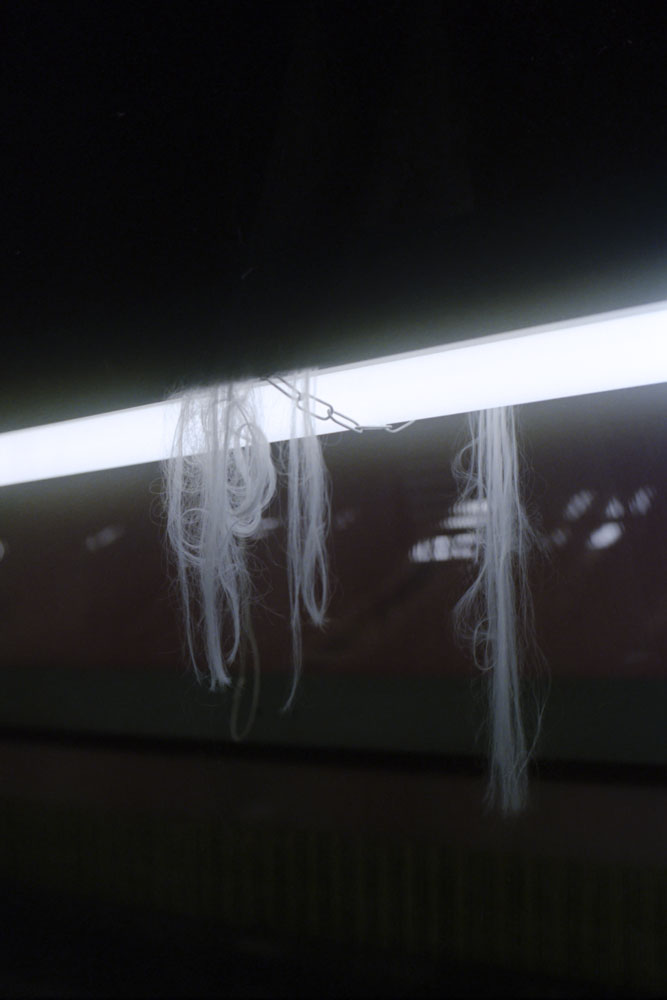: Could not find asset snippets/file_domain.liquid/assets/img/top/loading.png)
旅をすることができなくなって、急速に小さくなった世界にも、様々な窓があることを発見した。自宅の近くには、時間が止まったような佇まいの、人影のない自動車整備工場があって、そこに唯一残されていた、カーテンのチューリップ柄に目を奪われた。カーテンはとても面白い、そう黒河内は言う。おばあちゃんも、この自動車工場の人も、私も、時代を超えても惹かれるものが一緒なのだから。
ノスタルジーを感じるチューリップの柄からインスピレーションを受け、柄を描き生地のモチーフにすることに決めた。ジャガード織機でしか織ることのできない細かなメッシュに、強度の違う経糸と緯糸を撚り合わせることで、縮率の違いを利用したチューリップの膨れ柄をあしらった。イメージしたのはどこか懐かしいカーテンだった。
シルエットのヒントをくれたのもカーテンだった。会社でのフィッティングもできない中、自宅でカーテンを体にまとったり、腰にあてたりしているうちに、偶発的にできたタックやドレープ感が美しかった。それらを写真におさめ、スケッチした。体にまとわりつくカーテンのランダムな曲線をあえて不揃いな幅のプリーツで表現し、風をはらんだときのボリューム感を表現した。こうして生まれた生地は、真夏の暑い日、シワにならず、高い速乾性と通気性を持つ、涼やかに着られる洋服たちへと姿を変えた。
Limited to travelling, the world seemed smaller, but at times like this one finds beauty in its surroundings. Maiko Kurogouchi discovered that there were various windows, with different appearances. Near the house, remained an empty car mechanic factory, as if time had stopped. The one thing that remained was a tulip patterned curtain, catching Kurogouchi’s eye. She says curtains are interesting. Even with time, for Kurogouchi, her grandmother, and people in the car mechanic factory, what one finds attractive are the same.
Gaining inspiration from the nostalgic tulip pattern, Kurogouchi decided it as the motif of the fabric and drew the pattern. Using jacquard loom to weave fine mesh, twisting warp and weft of different strength, the shrinkage created a bulging tulip pattern. What she imagined was a somewhat nostalgic curtain.
The curtain also provided a hint for the silhouette. The office close, fitting not possible, Kurogouchi wore the curtain around herself, on her hip, and by coincidence found beauty in the tack or drape created. She made sure to keep snaps, and sketched out the design. The random lines created by the curtain wrapped around the body were expressed by uneven width pleats, also adding volume when the wind swifts by. The fabric created, safe from wrinkles with quick drying and breathability, changed itself into garments that could we worn even on hot summer days.










